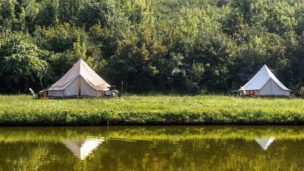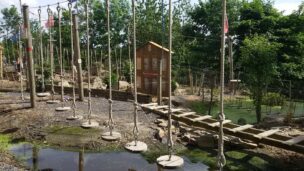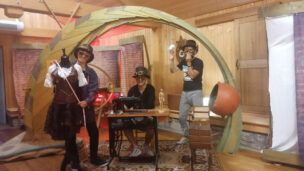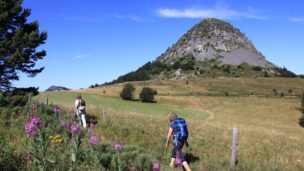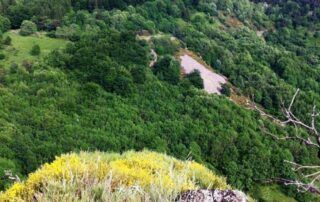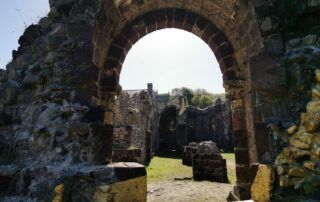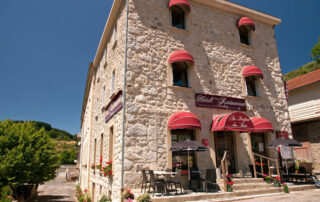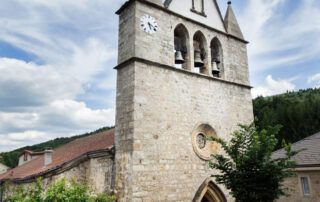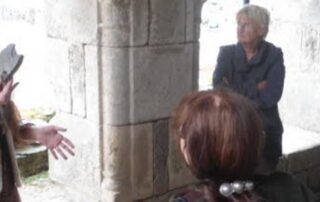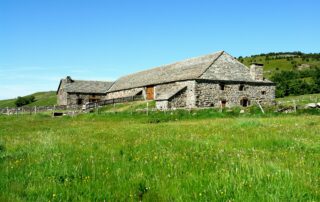Description
Registered at the Heritage Economics Pole.
In Le Roux, we have not always known the large church in the middle of the village. Since the Middle Ages, there was a small Romanesque church just above the seigniorial house, (currently known as "Veï Tavelat") and below the castle which was located on the rock overlooking the village of Le Roux. Currently, there is no trace of this church except the name of the place: the Greenhouse of the Church.
The church was not very large, which leads one to believe that it was decided to build a more spacious church in order to be able to accommodate a larger number of faithful, the population of Le Roux being still growing in the middle of the 19th century.
Luckily, there is a notebook in the communal archives which contains the deliberations and accounts of the factory of the Roux church which sheds some light on the conditions of the construction of the new church. (The Fabrique being a group of clerics or laity charged with the financial administration of a church). The construction of the church at Le Roux was established and formed by Bishop Monseigneur de Chabot and approved by the government on 19 floral year 12 of the republic (April 9, 1804). It consisted of five members. This council at Le Roux was chaired by the parish priest Jean Pierre Chareyre at the time that interests us. It seems that the accounts of the church council were not very up to date during the construction of the new church since it was decided to purchase a notebook to record events and expenses afterwards.
The old church was razed and the stones reused for the construction of the new church.
It was apparently in such a bad state that it was not even considered the restoration or the consolidation of the building, the vault and/or the walls being in the process of collapsing. Unfortunately, we do not know of any photo or drawing representing this old Romanesque church apart from the ground plan appearing on the old cadastre.
But we must imagine a church of modest size, 15 meters long, including the apse, about 8 meters wide outside, traditionally oriented as much as possible in the west-east direction, with a small window in the apse to the east through which the light of the rising sun was projected onto the altar, and a bell tower housing at least one bell, as it will be found in the new church. This first church was therefore the size of the parish of Roux, compared to Notre Dame de Prévenchères in Montpezat or the church of the Abbey of Mazan.
The architect Vallier de Privas, who drew up the plans for the new church, obviously wanted to keep the appearance of the old Romanesque church by designing a traditional comb bell tower for the region, with the rounded choir, vaulted cul- de-four, a single vaulted nave, while inflating the volumes. But it will be a modern construction, without buttresses or relieving arches.
We are of course asking for help from the government, which allocated a sum of 3138 F, 45 centimes.
The inhabitants of the parish devoted nearly 2000 days of services by carrying materials for "Sir Jean Baptiste Ferant, master mason living in Lalevade, commune of Nieigles, the latter having taken the work at a discount to be carried out for economy, so as to that all work is carried out in a legal manner within the meaning of the government and is approved by the architect. »
As we built at the lowest cost, the construction would have cost 11 F. on May 106, 26.
It was finally on Tuesday, August 18, 1846 that the “Blessing of the new church of Le Roux, dedicated to the Blessed Virgin, whose feast of the Assumption we have chosen as our patronal feast, took place. The patron saint as well as the feast were designated by the Bishop by letter dated August 1846, 1879.” In 1864 we return to the patron saint of always, Saint Sylvester, for a reason that we do not know. XNUMX: a new altar is built.
We also offer:
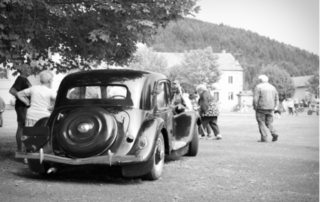
5th edition of the Discovery Rally, opening speech. Prize giving ceremony at the end of the day around a buffet with friends from Issarlès.
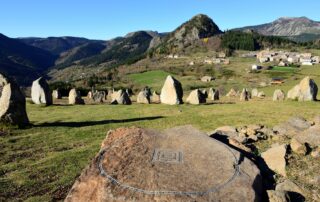
Guided tour of the Tchier de Borée by a heritage guide: contemporary work of 70 stones engraved with symbols and myths of the Boutières. Decipher the messages from sculptors Glypheins Fabienne and Serge Boÿer.
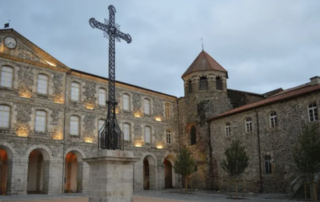
Guided discovery of the pretty village of Monastier sur Gazeille with friends from Issarlès.
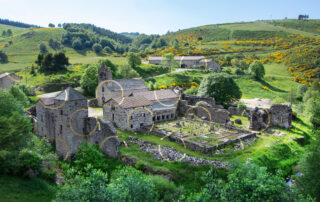
Discover the 12th century Cistercian abbey of Mazan with a heritage guide. The work of the artistic journey of the Partage des Eaux by Felice Varini A circle and a thousand Fragments. And the stained glass windows of the Notre-Dame de l’Assomption church.
Location





